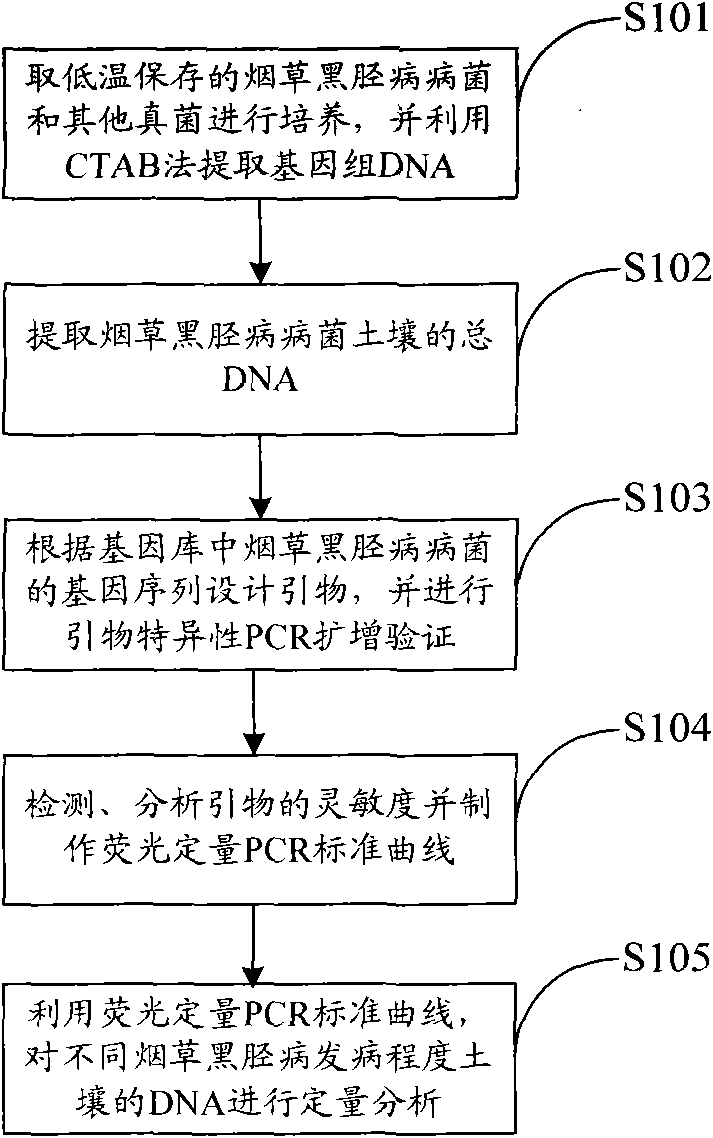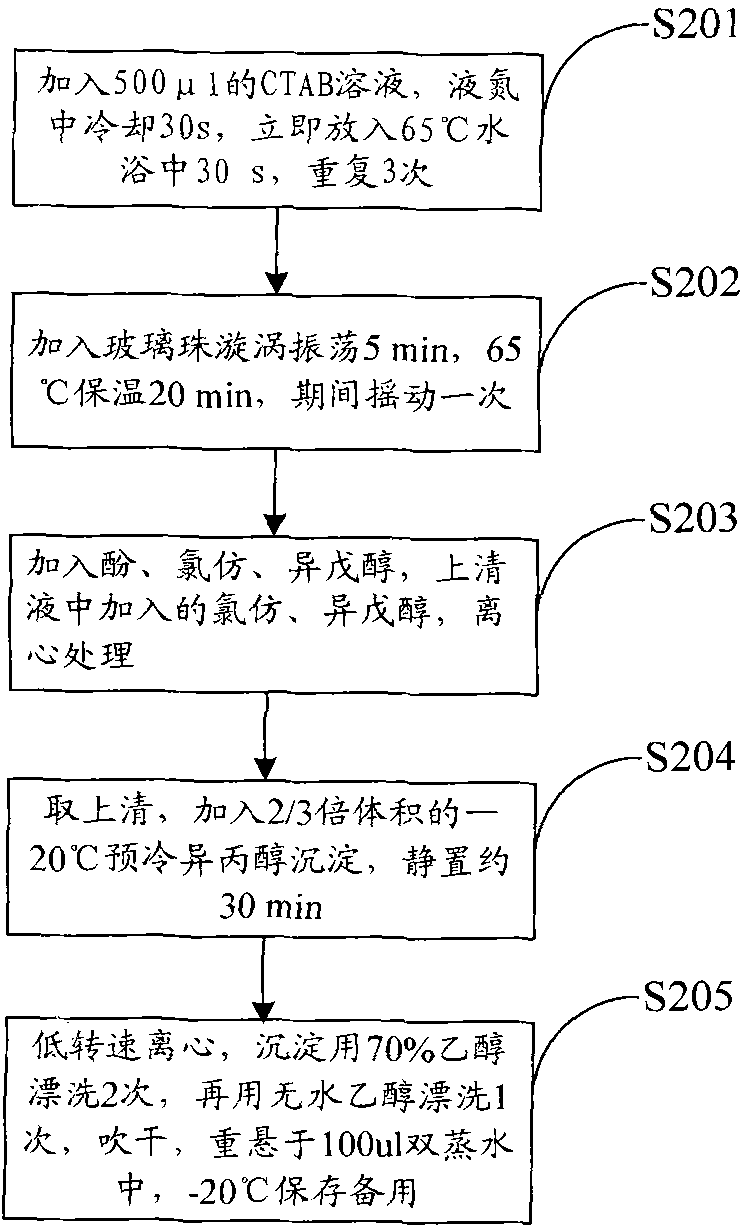Method for detecting phytophthora parasitica in soil
A technology of tobacco black shank bacteria and tobacco black shank disease, applied in the field of plant pest and disease quarantine, can solve the problems of time-consuming repeatability and low accuracy, and achieve the effects of removing pollution, reducing impact, and shortening the detection cycle
- Summary
- Abstract
- Description
- Claims
- Application Information
AI Technical Summary
Problems solved by technology
Method used
Image
Examples
Embodiment Construction
[0016] In order to make the purpose, technical solution and advantages of the present invention more clear, the present invention will be further described in detail below in conjunction with the accompanying drawings and embodiments. It should be understood that the specific embodiments described here are only used to explain the present invention, not to limit the invention.
[0017] figure 1 The implementation flow of the method for detecting tobacco blackleg bacteria in soil provided by the embodiment of the present invention is shown.
[0018] The method includes the following steps:
[0019] In step S101, the tobacco black shank pathogen and other fungi preserved at low temperature are cultured, and the genomic DNA is extracted by the CTAB method;
[0020] In step S102, the total DNA of tobacco black shank pathogen soil is extracted;
[0021] In step S103, primers are designed according to the gene sequence of tobacco black shank pathogen in the gene bank, and primer-...
PUM
 Login to View More
Login to View More Abstract
Description
Claims
Application Information
 Login to View More
Login to View More - R&D
- Intellectual Property
- Life Sciences
- Materials
- Tech Scout
- Unparalleled Data Quality
- Higher Quality Content
- 60% Fewer Hallucinations
Browse by: Latest US Patents, China's latest patents, Technical Efficacy Thesaurus, Application Domain, Technology Topic, Popular Technical Reports.
© 2025 PatSnap. All rights reserved.Legal|Privacy policy|Modern Slavery Act Transparency Statement|Sitemap|About US| Contact US: help@patsnap.com



